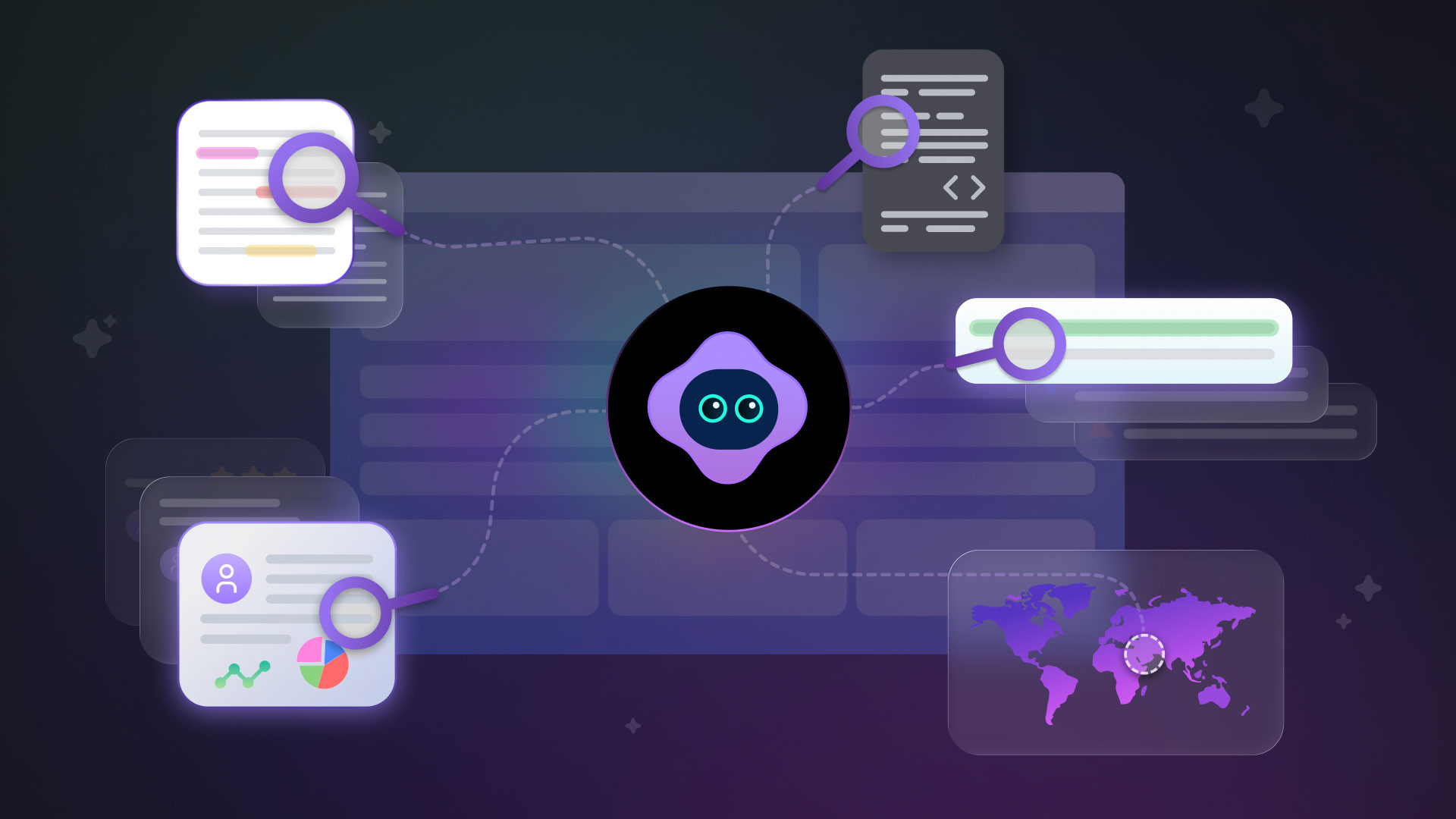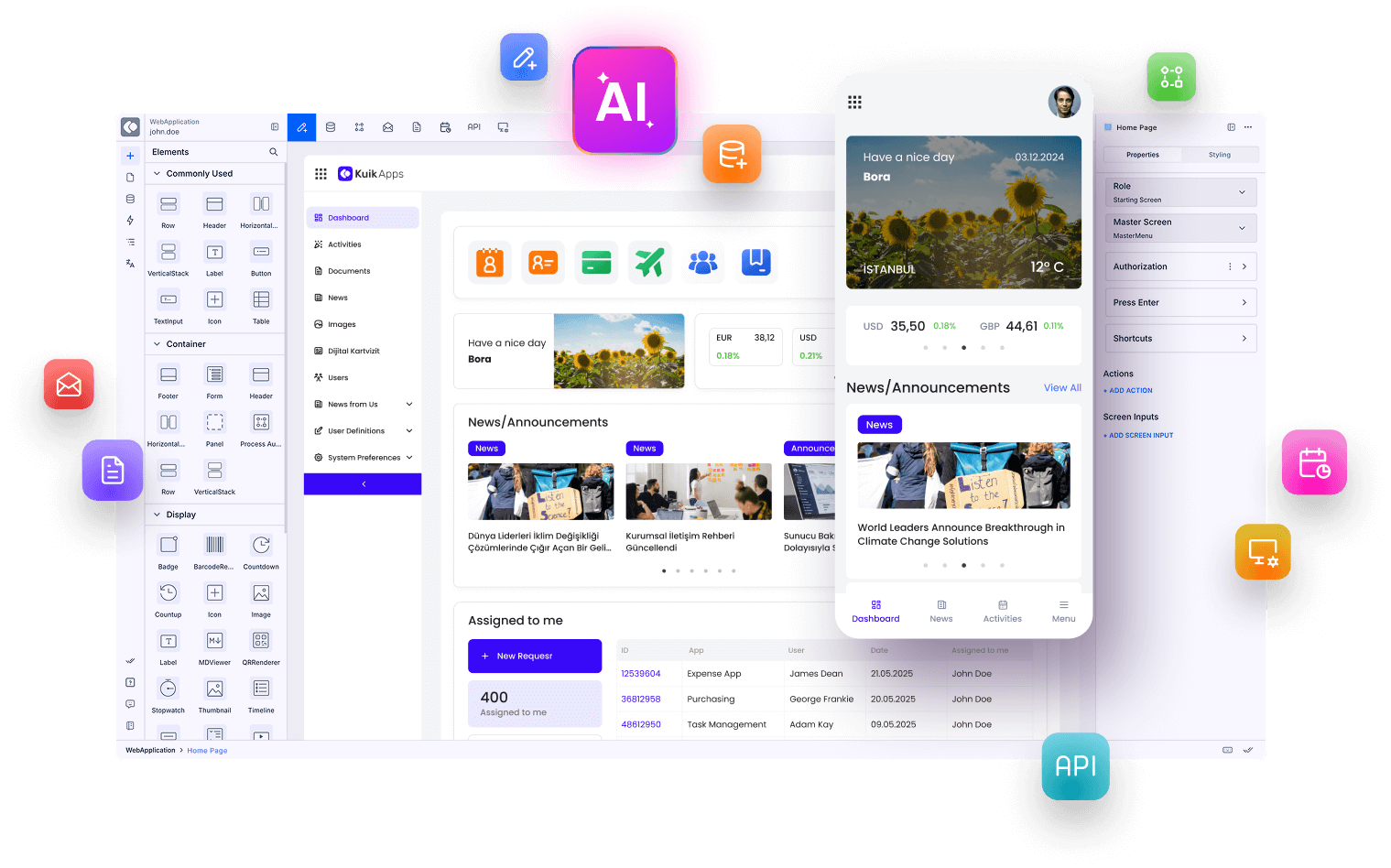It can increase your customer satisfaction, give you a competitive edge over your opponents, or even be the service itself.
Low-code can help you with several main use cases more than you can imagine.
Although many people are aware of the benefits brought about by a custom application, few know how to go about starting to develop it. There are a number of approaches you can employ to build an app, each of which has its own benefits and disadvantages.
How to develop your own app from scratch
- Creating your own in-house developer team: It is a fail-safe method, though quite expensive.
- Working with freelancers: Freelance developers aren’t necessarily cheap, but they can provide you with a satisfactory service based on their talents.
- Learning to code and building the app yourself: If you don’t have enough money to hire outside talent and have enough time to learn to code, go ahead.
- Using low-code platforms: You can build state-of-the-art applications without the need for advanced coding know-how, thanks to low-code platforms.
- Cooperating with third parties: If you need an advanced team of developers but don’t want to bother hiring and managing them, utilizing third-party software providers is an efficient way.
We listed some ways to develop your own application and why you should (or shouldn’t) use them.

Create your own in-house developer team
Creating an in-house developer team will get your job done. A team of experienced coders is clearly capable of creating the dream application in your mind.
Although a definitive solution, employing a whole team of developers isn’t particularly effective. As it costs a lot of money to find and work with great talent, creating a developer team will shrink your return on investment.
Therefore, creating a developer team does not make financial sense in most cases.
However, if you are planning on building an application that’s huge in scale, you need to invest more money accordingly. In that case, consider creating a developer team by all means.
Work with freelancers
Freelancers are not necessarily cheap - which is perfectly natural given their talent in their specialization. However, you can consider them as a reliable option in most cases.
If you decide to employ freelancers to build an application, you have plenty of options in terms of choosing talent. Each freelancer has a different specialization. Some of them might be experienced in developing applications for iOS, while others show their talent in web apps or Android.
So, you can decide what talent you need, research the market, find a developer tailored to your needs, and go ahead! Freelancers usually operate and quote on an hourly wage or project-based pricing. This means you only have to invest as long as they work and as much as they work.
In-house teams, though? Not so much.
You need to pay them a fixed wage to employ their talent, which brings about inefficiency in most cases. So, sticking with freelancers is better as long as you aren’t working on a huge app.

Learn to code and build it yourself
Outsourcing a job is not always the best option.
Hiring outside talent or using various services can get you where you want, but they are usually costly options.
So, if you
- are short of money,
- have enough time,
- or enjoy coding,
you might as well just learn to code to build the application yourself.
It won’t only help you save money, but you can also use the coding know-how you learn in other projects. Coding is a high-value skill, after all, especially in today’s world. Learning it can provide you with an infinite return on investment.
Use low-code platforms for fast & robust apps
You do not have to choose traditional hard-coding solutions to build an application. Low-code platforms allow people without coding knowledge to develop applications with the help of visual tools that operate on basic logic.
Just have your algorithm ready. After that, all that’s left is to create a workflow with dozens of ready-to-use elements on the visual development interface.
Low-code development is getting more and more popular each day thanks to the agility, speed, and overall efficiency it provides. It can help you with more main use cases than you can imagine.
As you do not need to be advanced in coding, low code is an easier alternative to traditional development. That also makes it a cheaper option because anyone can create with low code, as opposed to the specialists on the other side.
Applications built with low code are much easier to maintain and integrate into various data sources. As low-code building platforms always have the latest security protocols, you do not have to tackle the hard code to modernize your application. Many low-code services also support integration with various platforms, which can power your application even more.
Low code is also superior when you want to release your application on multiple domains. Normally, you would need different codes for web, Android, and iOS apps. However, thanks to low-code platforms, you just have to create your application once to run it anywhere.
Hard coding can take much more time than desired. Therefore, it not only makes it harder to release your application but also complicates your job should there be anything to change once you go live. With low code, you can reduce your application’s time-to-market and make quick changes in case of any unexpected problem.
Low code offers so many benefits for businesses. You can take advantage of those benefits whenever you want by utilizing it.

Cooperate with third parties
If you’re working on a relatively big project but don’t want to assemble a team of developers, we recommend getting help from third-party companies.
They are capable of handling projects huge in scale without making you have to deal with in-house talent.
Software companies can deliver your vision in a short amount of time thanks to their team of specialists, who you don’t have to manage.
You just have to communicate what kind of application you need in detail. Remember, service providers do not magically know the application that you envision. In order to get a satisfactory result, you need to communicate with and guide your provider in every step until delivery.
After you provide them with a detailed brief, third-party providers will take your vision and turn it into the application that you dreamt of.
In a nutshell
There are many ways you can use to develop your own application. Each way has its advantages and disadvantages, and you should make your choice based on your needs and budget. Still, it is safe to say that utilizing low-code platforms is the best option in many cases. That’s because they are efficient and suitable for businesses of any size.
Try Kuika today to take your first step into the wonderland of low-code development!
















